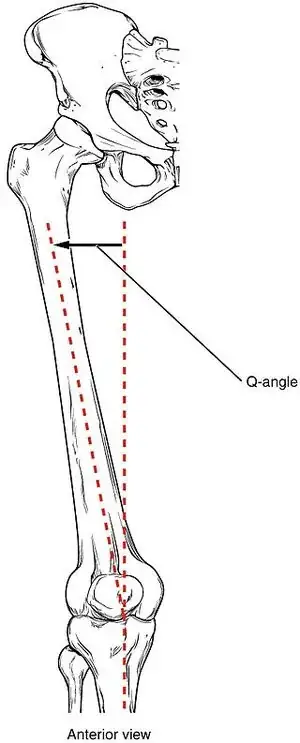In men and women, the Q angle is different. Typically, for men, the angle is around 12° while, for women, the angle Q angle is 17°.
As you can see from this image, if you were to connect the lines to form a triangle, there would be 3 points.
- Point 1: the knee
- Point 2: the greater trochanter
- Point 3: some point to the left of the middle of the pelvis and to the right of the acetabulum
Obviously, a wider pelvis in women would naturally push the greater trochanter further away from the sagittal plane, which would make Q larger.
My question: Is this larger Q angle observed in women solely due to a wider pelvis?
Note, if the proportions of the male and female femurs were exactly the same if we controlled for height, then the Q angle difference should be due to exclusively the wider pelvis. Thus, based on simple geometry, if the Q angle is not strictly due to a wider pelvis, we should observed differences in the proportions of the femur's neck and shaft, controlling for height.
